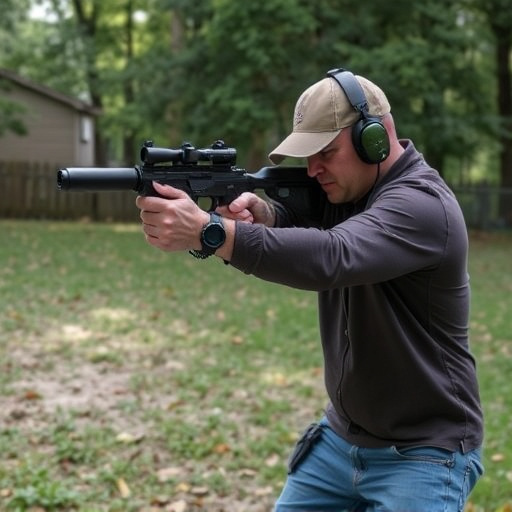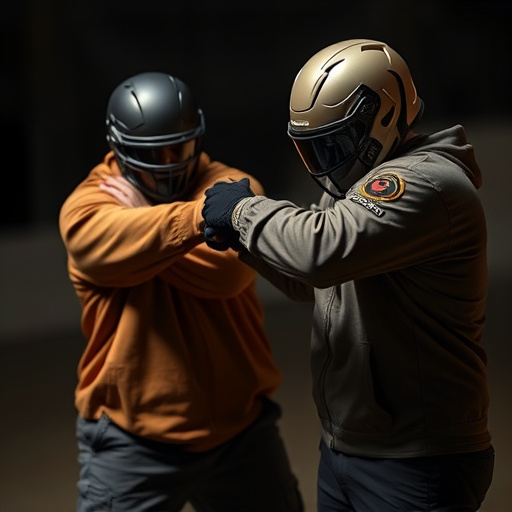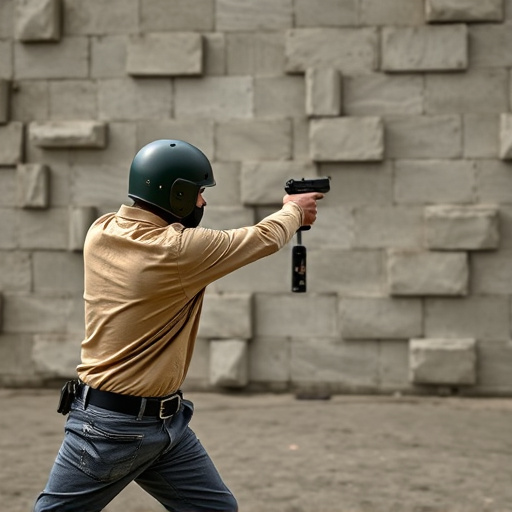The tactical stun gun with LED flashlight has emerged as a powerful tool for law enforcement and self-defense, using an electric current to temporarily paralyze targets (2-10 seconds) by disrupting muscle control. The built-in flashlight enhances visibility and de-escalation, but the duration of paralysis depends on factors like voltage, pulse time, target area, user's physical condition, and environment. Effective use requires training and proficiency in handling these variables during tactical situations.
“In the realm of law enforcement and personal safety, the tactical stun gun with LED flashlight has emerged as a game-changer. However, understanding the precise effects and duration of paralysis induced by these devices is crucial. This comprehensive article delves into ‘Understanding the Impact of Tactical Stun Guns: A Comprehensive Look,’ exploring various factors that influence the paralysis duration after Taser deployment. By examining these elements, we aim to provide valuable insights for both professionals and individuals seeking effective self-defense solutions.”
- Understanding the Impact of Tactical Stun Guns: A Comprehensive Look
- Factors Influencing Paralysis Duration after Taser Deployment with LED Flashlight
Understanding the Impact of Tactical Stun Guns: A Comprehensive Look

The deployment of tactical stun guns, often equipped with a powerful LED flashlight, has become a significant tool in law enforcement and self-defense strategies. Understanding the impact and duration of paralysis from such devices is crucial for both professionals and individuals seeking protection. Stun guns emit an electric current designed to disrupt muscle control, causing temporary incapacitation. The effectiveness and duration of this paralysis can vary based on factors like the stun gun’s power output, contact area, and individual sensitivity.
A comprehensive look at tactical stun guns reveals that the average paralysis duration from a well-administered shock is around 2-5 seconds. However, for specialized devices with higher voltage outputs, this period could extend to 10 seconds or more. The LED flashlight feature not only enhances visibility during low-light scenarios but also serves as a crucial component in de-escalation tactics, allowing users to assess the situation and ensure safe intervention.
Factors Influencing Paralysis Duration after Taser Deployment with LED Flashlight

The duration of paralysis after a tactical stun gun with LED flashlight deployment can vary significantly based on several factors. One primary consideration is the stun gun’s power output and the duration of its pulse. Higher voltage and longer pulse times typically result in prolonged immobilization, as they disrupt nerve signals more effectively. The location of the stun gun discharge is another critical aspect; striking vital areas like the neck or chest can induce longer-lasting paralysis due to the concentration of electrical current in these sensitive regions.
Additionally, an individual’s physical condition and muscular rigidity play a role. People with higher muscle mass or those already experiencing physiological stress may exhibit shorter recovery times from stun gun effects, while others might remain paralyzed for extended periods. Environmental conditions, such as temperature and humidity, can also influence the body’s response to the shock, potentially affecting paralysis duration. These variables underscore the importance of tactical training and proper equipment use when employing a tactical stun gun with LED flashlight in various scenarios.
The deployment of a tactical stun gun equipped with an LED flashlight can significantly impair an individual’s mobility, but the duration of paralysis varies based on multiple factors. Understanding these variables is crucial for both law enforcement and individuals seeking self-defense options. This article has explored the comprehensive effects of such devices, highlighting that while they provide a powerful deterrent, the length of paralysis can differ, affecting outcomes and strategic planning. By considering the influence of body mass index, individual health, and environmental conditions, users can make informed decisions regarding this technology’s effectiveness in various scenarios.
